The Big Cheese: Exclusive Interview with Michel Roux Snr.
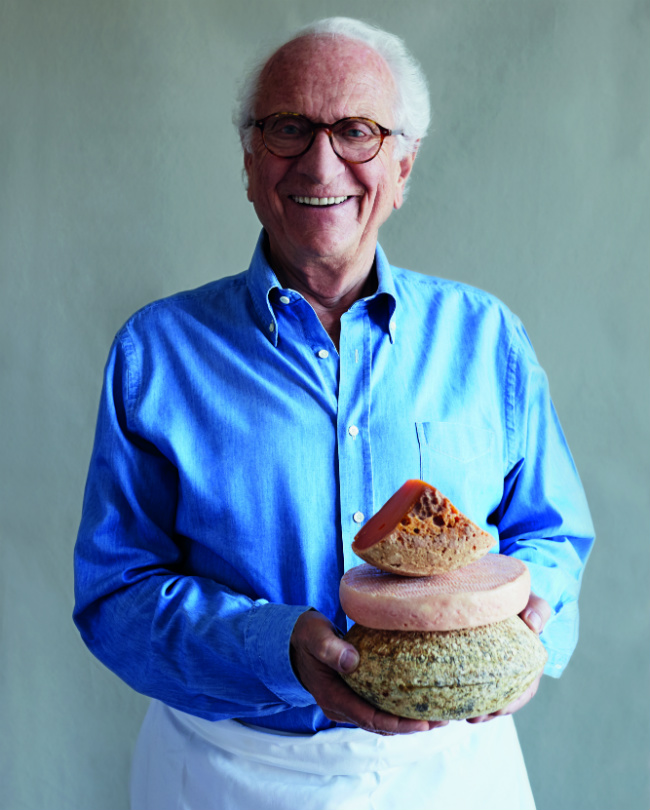
As his essential guide to cooking with cheese hits the stores, Michel Roux Sr. looks back on his lifelong love affair with the stinky stuff.
France Today: What made you decide to devote an entire book to the subject of cheese?
Michel Roux: People are crazy about cheese. There is an insatiable demand for it and a fascination with it – not least my own! There are so many varieties of cheese, with more coming to the fore all the time. I have discovered so many in my travels around the world. As an ingredient, it enhances an abundance of dishes and complements many ingredients, but it must be used with care to ensure that it does not dominate the dish.
FT: When did you first fall in love with cheese?
MR: It all started when I was a seven-year-old child, when I began to be entrusted by my mother with making the shopping trips to our local market of Saint-Mandé. I was always transfixed by the cheese stall – all the shapes, colours, sizes, names and smells, and the fact that there were always new ones to discover, depending on the seasons. The lady stallholder often used to spoil me with little tasters and quickly developed my palate. This fascination with cheese has remained with me all my life.
FT: Your family didn’t have a lot of money when you were growing up. Was cheese a rare treat?
MR: It was always a treat but it made a regular appearance at mealtimes. My mother instilled in me the value of money, as well as cheese, and I had to stretch our pennies as far as I could when I went to the market. I often chose Cantal, which was known as “poor man’s cheese” at the time.
FT: What was your favourite cheese as a child? And how about now?
MR: Occasionally we were treated to a piece of Roquefort. It was so expensive and we used to spread it as far as we could on our baguette and savour every mouthful. You always go back to your first love and Roquefort remains my favourite. It is truly the king of cheeses.
FT: Was it your early love of cheese that made you decide to become a chef?
MR: I started as a pâtissier’s apprentice when I was 15 but not through my love of cheese, although my love of cheese certainly developed as I became more experienced as a chef. I learned so many ways to cook with it and incorporate it in dishes, and I’m still learning.
FT: Why the move to London to open a restaurant? Especially at a time when the foodie landscape was so different – some might even say sub-par.
MR: We moved to the UK in the late 1960s to start a restaurant because someone needed to switch on the light and we were up for the challenge. My brother Albert and I used to visit London and we were always disappointed with the food. We always planned to open a restaurant together, so we opted to do it in London since the food was so atrocious.
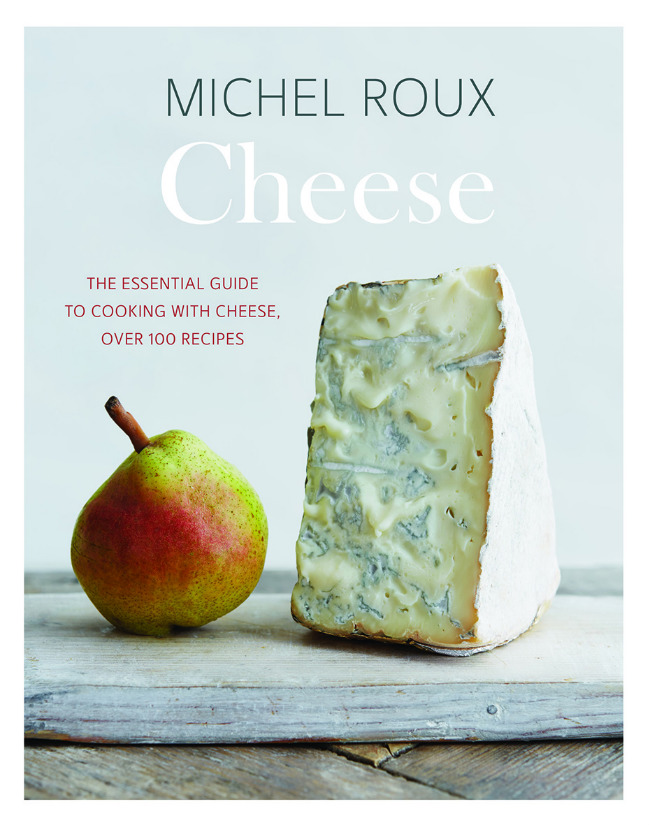
Cheese by Michel Roux. The essential guide to cooking with cheese, over 100 recipes.
FT: You’ve held three Michelin stars for more than three decades; what is the secret to staying on top?
MR: Consistency, teamwork and creativity. The Waterside Inn has held three Michelin stars for 34 years, the longest of any restaurant in the world outside France. But it is important to note that it is my son, Alain, who has been responsible for the stars for the last 14 years, since he has been chef-patron there. There is no simple answer but, as a family, we have always reached for the stars, in every sense!
FT: Gourmets outside France are growing fonder of stronger cheeses. Is your book a way to introduce a greater public to more unusual varieties?
MR: In the UK now, the numbers of varieties of cheeses and the quality just keeps growing, and so do the numbers of its fans around the world. British cheese, like wine, used to be the poor cousin, but no longer. Now consumers are so well-informed, curious, well- travelled and adventurous in their tastes. This is evidenced by the popularity of our cheese trolley at the Waterside Inn, boasting 40 or 50 cheeses at any time, including many British varieties. People like to include a cheese journey, a ‘flight of cheeses’, when they dine with us.
FT: You’ve combined unusual recipes and put a modern twist on classics in the book, with your pizza, for example. What inspired all these wonderful twists?
MR: My palate is my inspiration. I love to experiment and push the boundaries with a dish. It keeps food interesting.
FT: What’s your favourite recipe in the book?
MR: I had so many, I had to include only my favourites. But of them all, I’d choose my Parmesan or Gruyère soufflés. These are as light as a feather and, when I am feeling greedy, I can easily eat a whole one.
FT: What’s your pet peeve, if any, with British cuisine?
MR: The main irritation I encounter in Britain is with undercooked vegetables. Thirty years ago, the vegetables tended to be overcooked, but now it is the opposite; they are too hard and crunchy. It is rare to find the perfect texture.
FT: What do you love most about British food?
MR: I love the homebakes and delicious pâtisseries served in afternoon teas. I also adore a classic roast dinner with all the trimmings, particularly British game, which is the best in Europe.
FT: What is the one dish you can’t abide?
MR: The only dishes I tend to dislike are those that are overpowered by many different herbs all at once. I prefer to choose just one herb and apply it sparingly in any dish. This applies also to spices; they must be used with care and balance. I also dislike the ubiquity of ‘smoked’ foods. Often this is not done well and delicate foods are simply overpowered by these strong flavours.
FT: What’s your péché mignon, your little weakness?
MR: I can’t resist spoiling myself with a Magnum ice cream from time to time, usually when I stop to fill up with petrol.
FT: What would you have done for a living had you not decided to become a chef?
MR: I would have loved to be a winemaker. I am very proud of my little vineyard at home in the south of France. I have a good cellar and I also run a small business importing fine wines from France for private individuals.
FT: What’s your food philosophy?
MR: Simplicity is best: less is more; try to avoid conflict on a plate. The priority should be top-quality ingredients, and not using too many in one dish. Every ingredient on the plate must have a reason for being there and they must all complement each other.
FT: What’s next for you? Would you consider retiring or taking a step back?
MR: No, these words do not feature in my vocabulary. As anyone who knows me will tell you, I am irrepressible and constantly looking ahead to my next adventure, I never stop. I love working with young people and, as I grow older, I see it as my duty to pass on my knowledge and experience. So, in autumn 2018, my son and I will be launching a new restaurant, Roux at Skindles, at Taplow Riverside in Berkshire. This will be a chic bistro, a stone’s throw along the river from the Waterside Inn. It will be good-quality, affordable bistro food in a lovely setting. I am also kept busy with my bistro restaurant in Crans-Montana in Switzerland, Le XIX. This is in a fantastic Alpine setting alongside the championship golf course there.
FT: What is your main drive for staying in this extremely high-pressured industry?
MR: It is simply a way of life; I know nothing else. Knowledge means nothing unless you pass it on and this drives me above all else. And curiosity, I love to travel and I never stop learning.
The recipes below are excerpted with permission from Cheese by Michel Roux. The essential guide to cooking with cheese, over 100 recipes. Photography © Lisa Linder. Published by Quadrille, £20, hardback.
CROQUE-MONSIEUR GOURMAND
Serves 6
This is a delicious snack when made with plenty of finely sliced, good-quality ham. We serve it at the bar, Le Miedzor, in my restaurant in Crans-Montana. It’s always very popular with a glass of local wine. For a light lunch or supper, serve it with a green salad.
INGREDIENTS
12 slices of sandwich loaf, about 11cm square
1 litre chilled béchamel sauce (see below), well-seasoned with freshly grated nutmeg, pepper and a touch of cayenne
18 slices of good-quality ham, cut to the same size as the bread
120g Aletsch or Gruyère, freshly grated
1 Lay a slice of bread on your work surface. Using a palette knife, spread a layer of béchamel over the slice, then place 2 slices of ham on top. Add a second layer of béchamel then place another slice of bread on top, pressing lightly on it. Place another slice of ham on top, then spread a generous layer of béchamel over the ham.
2 Repeat with the remaining ingredients to make 6 croque-monsieurs in total and then place them on a baking tray. Sprinkle the grated Aletsch or Gruyère cheese over the top of them and press it lightly into the béchamel so that it sticks well. Cover the tray with cling film and refrigerate until ready to serve.
3 Preheat the oven to 180°C/Gas Mark 4. Bake the croque-monsieurs in the oven for 15 minutes. Serve on individual plates, either whole, as they are, or cut into triangles.
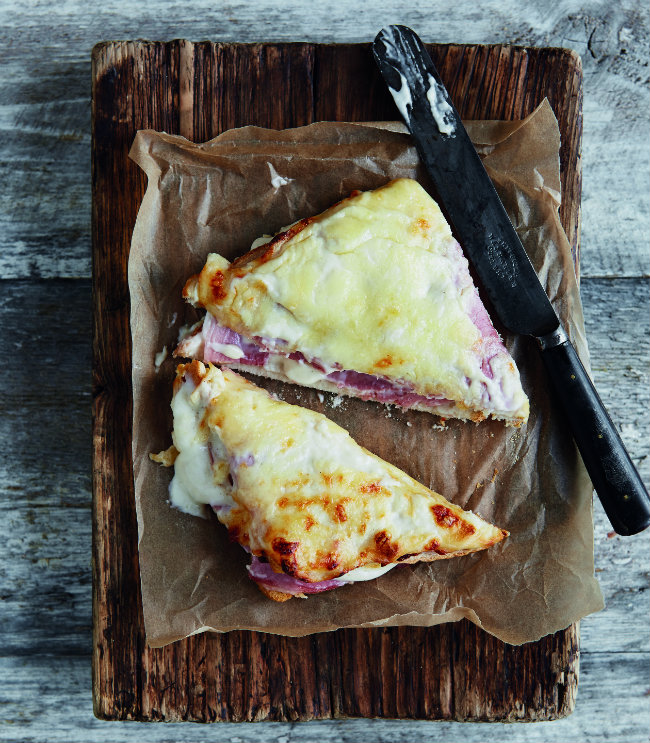
Michel Roux’s croque-monsieur. Photo: © Lisa Linder
BÉCHAMEL SAUCE
Makes 1 litre
Béchamel sauce is used in a variety of dishes, including cauliflower cheese and a classic croque-monsieur (see above). It also forms the basis of many other sauces. The sauce will keep in an airtight container in the fridge for up to 4 days; reheat in a bain-marie to serve.
INGREDIENTS
60g butter
60g plain flour
1 litre cold milk
Freshly grated nutmeg (optional)
Sea salt and freshly ground white pepper
1 Gently melt the butter in a small, heavy-based saucepan over a low heat, then add the flour. Stir with a whisk and cook gently for 2-3 minutes to make a roux.
2 Pour the cold milk onto the roux, whisking as you do so, and bring the sauce to the boil over a medium heat, whisking continuously. When the sauce comes to the boil, lower the heat and simmer gently for about 10 minutes, stirring the sauce frequently.
3 Season to taste with salt, white pepper and a little nutmeg, if you wish, then pass the sauce through a fine chinois.
4 Either serve the béchamel sauce immediately or, if necessary, keep it warm in a bain-marie, dotting a few flakes of butter over the surface to stop a skin from forming.
ARTICHOKES WITH FROMAGE BLANC AND SALMON ROE
In the middle of their season, artichokes are fleshy with a pronounced hazelnut flavour, marrying beautifully with the fromage blanc and fish roe in this exquisite starter. You can use Greek yoghurt instead of fromage blanc if you prefer, or if you can’t find any fromage blanc.
INGREDIENTS
4 Breton globe artichokes (400-500g each)
Sea salt and freshly ground pepper
Juice of 1 lemon, plus 1⁄2 lemon, cut in half
120g fromage blanc
A splash of cold milk (if needed)
75g rocket or watercress leaves
100g trout or salmon roe
4 slices of pain de campagne bread, toasted, to serve
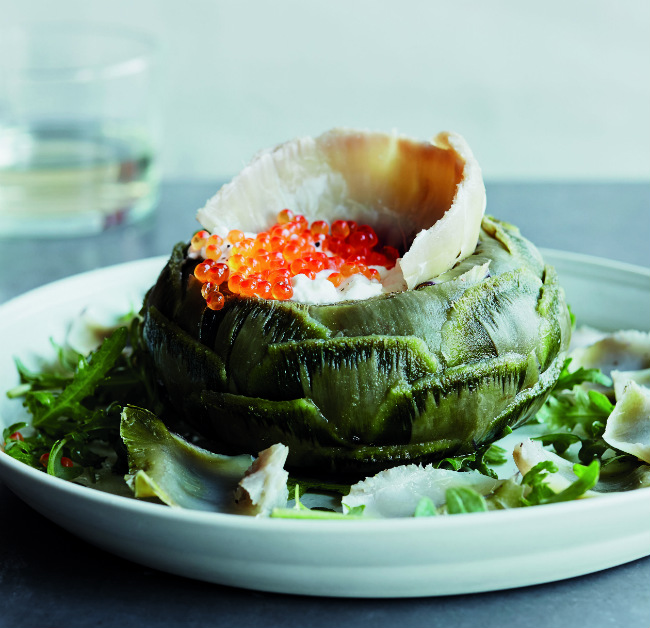
Artichokes by Michel Roux. Photo: © Lisa Linder
1 Fill a pan large enough to take the artichokes with water and bring to the boil. Meanwhile, break off the stems from the artichokes and remove the fibrous part from the base of the hearts. Using a serrated knife, cut off the tops of the leaves. Remove the outer leaves at the base of the hearts by twisting and pulling them off one at a time.
2 Wash the artichoke hearts in plenty of water, then add them to the boiling water with a large pinch of salt and the half lemon. Cook at a low boil for 30-45 minutes, depending on size, adding more boiling water if necessary to keep the artichokes submerged. To check that each one is cooked, gently pull on a leaf; it should come away easily.
3 Drain and refresh in cold water, then drain and set aside.
4 Add the lemon juice to the fromage blanc, with just a little salt and pepper to taste, and stir to combine evenly. If the mixture seems a little thick, add the splash of milk.
5 Slide a spoon down inside the leaves in the middle of each artichoke and push it down as far as the heart, then turn it right around the artichoke to release the heart from the leaves. Use the spoon to remove the choke from each heart. Remove the top leaves from each artichoke and set aside, then replace the heart in the artichoke.
6 To serve, divide the rocket or watercress between 4 large plates and place the artichokes in the middle, with the reserved top leaves arranged around each in a circle. Spoon the fromage blanc mixture into the artichoke hearts and top with the trout or salmon roe. Give each guest a small plate so they can discard the non-edible part of the leaves. Serve cold (but not chilled), accompanied by warm toast.
RICOTTA WITH BERRIES AND PASSION FRUIT
Serves 4
This is a lovely, simple dessert to serve at the height of the summer, when berries and fresh currants are at their seasonal best. Other fresh cheeses – goat’s, cow’s or ewe’s – can be substituted for the ricotta, as long as they have a mild flavour and a semi-firm consistency. For a more savoury note, mix a few fine herbs, such as snipped chives or tarragon, into the cheese and season with a touch of salt and pepper, omitting the sugar topping.
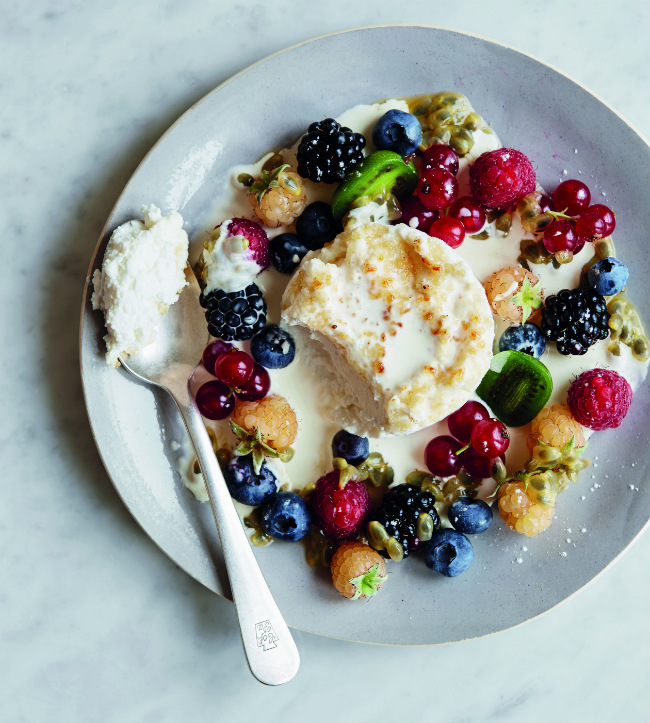
Ricotta dessert by Michel Roux. Photo: © Lisa Linder
INGREDIENTS
400g mixed berries, such as red and yellow raspberries, redcurrants, blackberries, blueberries
1 small kiwi fruit (optional)
2 passion fruit
320g ricotta
80g demerara sugar
100ml double cream, to serve
1 Prepare the berries, removing any stems. Peel and slice the kiwi fruit, if using. Cut the passion fruit in half and use a teaspoon to scoop out the insides into a cup; set aside.
2 Place a plain pastry cutter, about 8cm in diameter and 3cm tall, in the middle of a chilled serving plate. Using a spoon, fill the ring with one-quarter of the ricotta, packing it in lightly. Lift off the ring, twisting it slightly as you lift, so that the ricotta keeps its shape.
3 Repeat this process to shape the ricotta on the other 3 plates.
4 Dust the sugar evenly over the surface of each ricotta. Wave a cook’s blowtorch over the top to partially melt and caramelise the sugar, as you would for a crème brûlée.
5 Distribute the berries, and kiwi fruit, if using, around each ricotta mound, and spoon the passion fruit juice and seeds over the fruit.
6 Serve immediately, with the cream in a jug on the side.
As seen in France Today magazine
Share to: Facebook Twitter LinkedIn Email
Leave a reply
Your email address will not be published. Required fields are marked *



